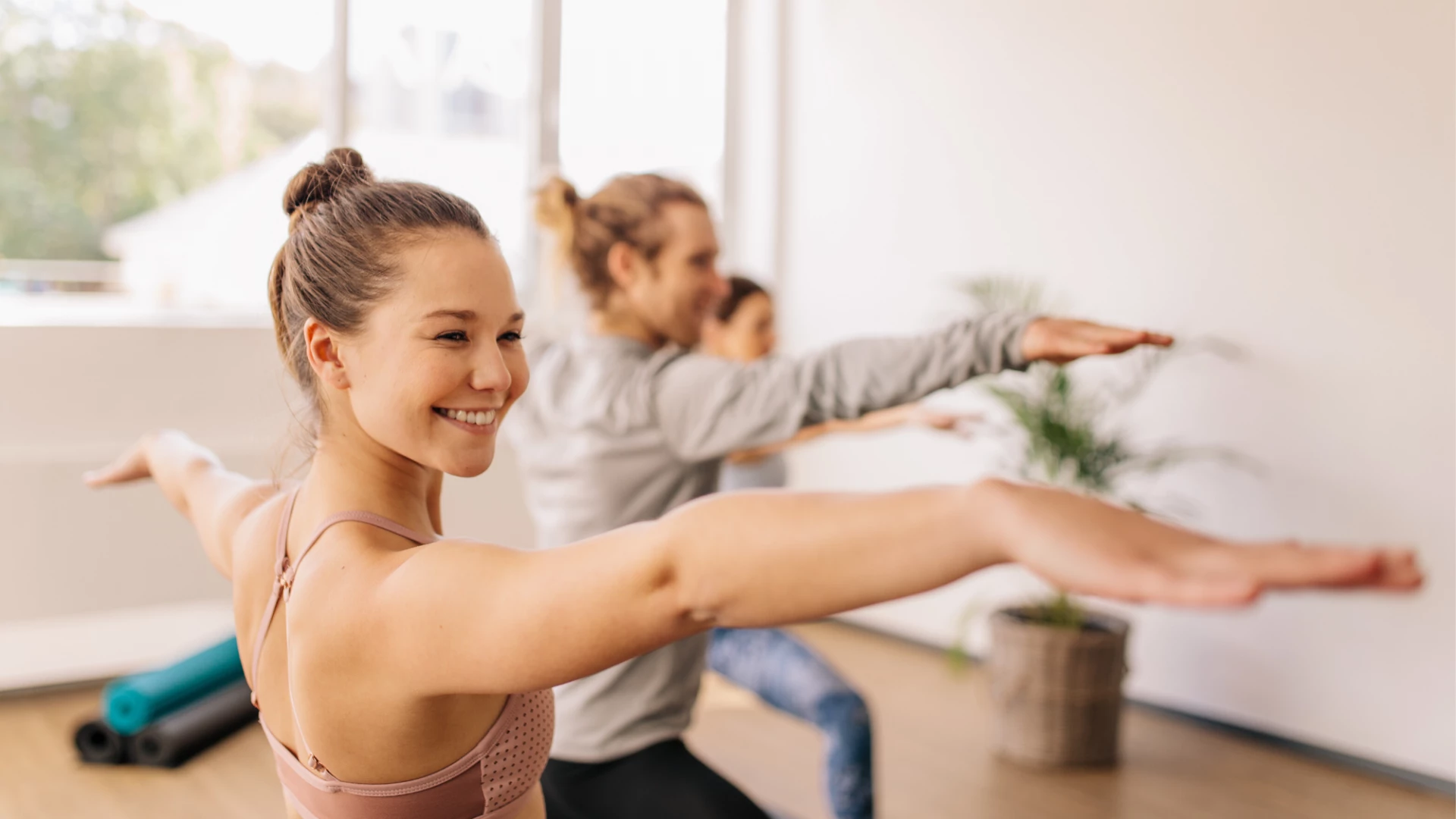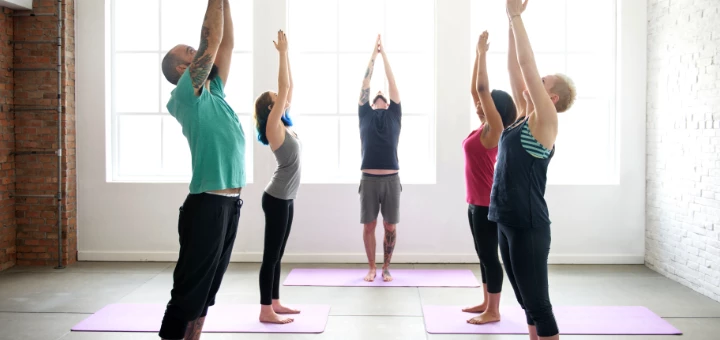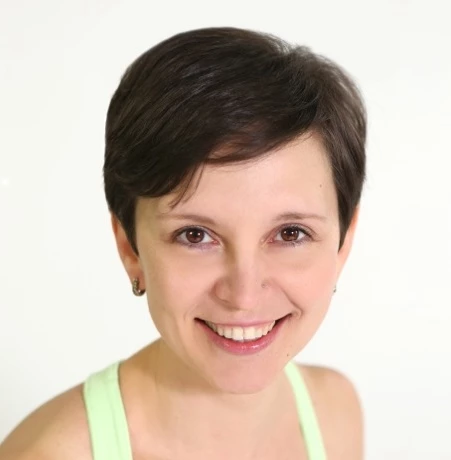Innovative Yoga Classes: Breaking Out of the Same Old Yoga Teaching Mode

A couple of weeks ago, I went to get a massage at a wellness center that I’ve never been to before. What struck me the most was how welcoming and considerate everyone was from the reception staff to my massage therapist. It appeared as if they were doing everything they could to make my experience more enjoyable, and I really appreciated it.
As I was lying there on the massage table, I was reflecting on the fact that I was probably the fourth or fifth client of the day for my massage therapist. Yet she made it feel as if it was all about me for that hour. To her, my appointment was everyday routine; to me, it was a rare occurrence that I wanted to get the most out of. And she delivered not only a good massage but a positive overall experience.
I remember being on the other side of that equation when I was teaching multiple yoga classes per day. Sometimes those classes would start to blend in and begin to resemble one another in content. But then I would remind myself that what was routine to me, was “an experience” to my yoga students, who looked forward to those classes and expected to gain something interesting and useful from them.
Setting Intention for Your Yoga Class
This is where I found that having a specific intention for each one of my classes made the entire experience richer, deeper, and more lasting, both for my students and for myself. Instead of falling into the trap of “same old, same old,” we got to experiment, investigate, and become more invested in the whole process. Those classes became more meaningful.
There can be all sorts of intentions for general yoga classes. Choosing the right one depends both on the teacher and her students. I usually find it helpful to first define for myself a general direction that I want to pursue because I think that it helps to narrow down the options.

You can ask yourself: what do I want to accomplish with my yoga classes? You might want to help your students:
-
Develop the body (stretch this, strengthen that, mobilize this, release tension here, etc.)
-
Move the energy and affect physiology (using poses as “prana pumps” to pump the energy throughout the body)
-
Anchor their attention in the body (to build body awareness, improve concentration, shift from external to internal focus)
-
Explore their undesirable movement and thinking patterns
-
Open their minds and connect to something greater than themselves
Those intentions are not mutually exclusive, of course, and you do not have to commit to one at the expense of all others. But choosing one direction to investigate for some time helps to narrow your focus and make more conscious choices about your class content.
Refining Intention
After choosing the general direction (for example, “develop the body”), I like to narrow it further down to a series of classes that I plan to teach. For instance, we can focus on the hips and investigate the hips from every angle over several weeks. Or I might choose to focus on the directional movement of the spine and emphasize forward bending, then backbending, then twisting and so on, over several weeks. I might decide to work on balance and organize several classes around specific balance poses, and so on.
There are three main ways to approach choosing a specific topic for your class(s). You can base it on:
-
What your students request individually: You can ask your students about their preferences at the beginning of the class, but it usually only works in smaller groups. In larger classes, you might get too many unrelated requests (one student wants to work on the hips, another one on the neck, another one on the wrists, etc.). Or those requests might be too narrow (for example, the infamous “stretch the hamstrings”). And if you choose to work on someone’s requests and ignore the preferences of others, some students might feel neglected.
-
What your students need as a group: It can be useful to consider the needs of your students as a group if that group is more clearly defined. For example, if you teach a class at the gym downtown during lunch break, it will most likely attract office workers from the surrounding areas. Then it would be useful to use your class to counteract the physical stress from sitting, recharge their energy, and address mental fatigue.
-
What you are interested in at the moment?: Most yoga teachers I know are continually studying different aspects of yoga, both in the form of continuing education or in their own home yoga practice. Those are the best places to draw your inspiration from.
When you are investigating something new, and you invite your yoga students to follow along, you will get a variety of responses to the same practice, which will show you the range of human experience. Students will react differently to the same pose or breathing practice or will react in a way that you don’t expect, and both scenarios will enrich your knowledge as a yoga professional.
Study and Practice. Then Teach. 
I remember at one point in the past; I designed this clever, elegant yoga practice that involved resting and breathing in several deep forward bends. It felt great to me, but once I taught it to my class, several people reported feeling lightheaded, which was not the experience I was shooting for. That was a very useful piece of information that helped me modify the practice and get a different response next time.
And another important point that we sometimes forget: if you want to really remember and absorb any piece of information, you have to study it, then practice it, then teach it. This applies to any element of the yoga practice that you might teach—yoga poses, breathing practices, points of focus, ideas, chants, yoga sutras, and so on. Once you study it, practice it and teach it (few times), it is much more likely to take root in your experience and give you a better understanding of what it is meant to accomplish.
Study with Olga Kabel and YogaUOnline – Yoga for Every Body: How to Adapt Yoga Poses for Different Situations, Conditions, and Purposes.
Reprinted with permission from Sequence Wiz.
 Educated as a school teacher, Olga Kabel has been teaching yoga for over 14 years. She completed multiple Yoga Teacher Training Programs but discovered the strongest connection to the Krishnamacharya/ T.K.V. Desikachar lineage. She had studied with Gary Kraftsow and American Viniyoga Institute (2004-2006) and received her Viniyoga Teacher diploma in July 2006, becoming an AVI-certified Yoga Therapist in April 2011. Olga is a founder and managing director of Sequence Wiz-a web-based yoga sequence builder that assists yoga teachers and yoga therapists in creating and organizing yoga practices. It also features simple, informational articles on how to sequence yoga practices for maximum effectiveness. Olga strongly believes in the healing power of this ancient discipline on every level: physical, psychological, and spiritual. She strives to make yoga practices accessible to students of any age, physical ability, and medical history specializing in helping her students relieve muscle aches and pains, manage stress and anxiety, and develop mental focus.
Educated as a school teacher, Olga Kabel has been teaching yoga for over 14 years. She completed multiple Yoga Teacher Training Programs but discovered the strongest connection to the Krishnamacharya/ T.K.V. Desikachar lineage. She had studied with Gary Kraftsow and American Viniyoga Institute (2004-2006) and received her Viniyoga Teacher diploma in July 2006, becoming an AVI-certified Yoga Therapist in April 2011. Olga is a founder and managing director of Sequence Wiz-a web-based yoga sequence builder that assists yoga teachers and yoga therapists in creating and organizing yoga practices. It also features simple, informational articles on how to sequence yoga practices for maximum effectiveness. Olga strongly believes in the healing power of this ancient discipline on every level: physical, psychological, and spiritual. She strives to make yoga practices accessible to students of any age, physical ability, and medical history specializing in helping her students relieve muscle aches and pains, manage stress and anxiety, and develop mental focus.




